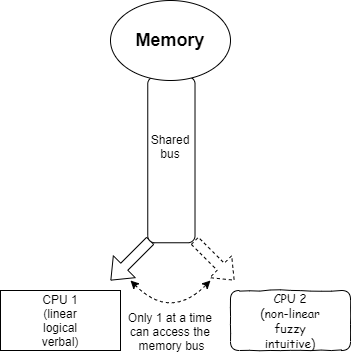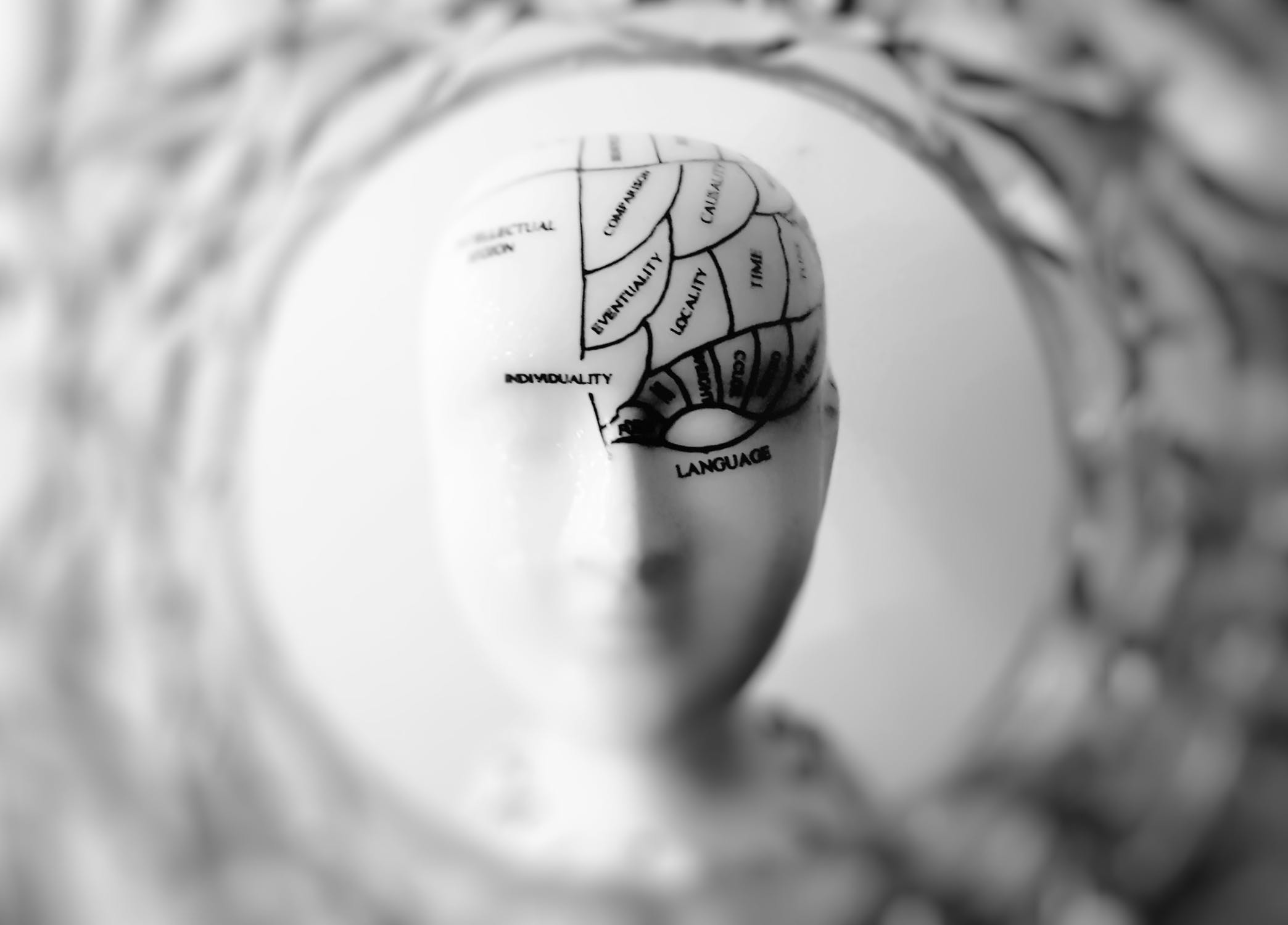In the previous article of this series, we discussed the Dreyfus model, an abstraction that lets you understand the progression we humans go through when learning a new skill.
In this article, we will discuss another useful model. In this case, the subject is our own amazing brain. Have you ever faced a very tough problem and spent hours trying to solve it only have that eureka moment in the shower a week later? What about those surges of inspiration that give you the answer for that pesky question that has been bothering you for weeks?
The model we will talk about tries to explain this type of phenomenon by representing our brains as a machine with two operation modes. On the one hand, we have our conscious-logical operation mode, the one we are most used to. On the other hand, we have the asynchronous pattern matching mechanisms that find answers to hard problems and fuels our intuition.
It's important to remember that this is just a model, not a literal representation of the underlying mechanisms in our brain. A model attempts to explain phenomena by using abstraction and simplification and are useful in the right context.
Dual operation modes of the brain
It's useful to think about your brain as a composite organ made with the following parts:

Based on image 3.1 from Pragmatic Thinking and Learning, by Hunt
- Your memory is a central repo attached to a bus that is fed into our CPUs.
- Both CPUs have different characteristics: CPU 1 is a typical sequential machine that is in charge of reason and logical analysis, CPU 2 is a super pattern-matcher that works in an asynchronous way.
- Only 1 CPU can access your memory at a time. This means that while you are doing intense work with CPU 1, CPU 2 is unable to access your memory and do its magic.
Now you understand the basic model, so let's explore our 2 operation modes in more detail.
CPU 1: The linear logic machine (L-mode)
CPU 1 is a linear machine that executes tasks (thoughts) in sequential form, one after the other. This is the mode we are most familiar with: our consciousness and the voice in our heads both live in our linear logic machine.
L-mode is in charge of all the language processing we do. All the symbolic analysis, abstract and rational thinking happens here. Due to having relatively little neural real-state and dealing with highly-abstract stuff, this operation mode is much slower than the one in CPU 2.
Most of us rely mainly on L-mode to solve our problems. What's more, for most of our lives we focus on training this part of our brain. From school to corporate trainings, most instruction methods are centered on presenting information and storing it using language and symbols.
L-mode is an incredibly important asset and nurturing it is very important, but it's not the only tool we have at our disposal. Equally important (and often ignored) is our second mode.
CPU 2: The rich pattern-matcher (R-mode)
R-mode is like a super search engine that can look for patterns across all your memory. There are lots of memories that aren't verbal and lie way beyond the recall capabilities of L-mode. This, of course, is not a problem for R-mode: it can perform massive scans and find novel relationships between seemingly disparate concepts and ideas.
R-mode is the mechanism behind finding out solutions to problems when you don't expect it: while taking a shower or walking through the forest your L-mode is off, giving your R-mode a chance to solve problems on the backgrounds. R-mode is asynchronous in nature, and you can't really command it, just invite it.
Inspiration and creativity are also in the R-mode domain. A guitarist during improvisation unconsciously knows which notes to play next, and an experienced software engineer intuitively knows which abstractions to create and how to split a project. All those things that you know because 'it feels right' are actually your R-mode conducting sophisticated pattern matching and giving you answers.
R-mode is non-verbal, so sometimes explaining how you know the answer to something can be difficult. If you find yourself replying "No idea, I just know", you can thank your R-mode.
Mastering both modes
Working effectively and making use of all your brainpower requires being comfortable with both operation modes.
Most of us are usually pretty good at using our L-mode, but often neglect the benefits of cultivating R-mode. Still, there are many things you can do to create a continuous L-R-mode flow and use the best from both worlds.
In the next article, we will discuss some basic techniques and practices you can use to create this flow.
Thank you for reading!
What to do next
- Share this article with friends and colleagues. Thank you for helping me reach people who might find this information useful.
- This article is based on Pragmatic Thinking and Learning: Refactor Your Wetware. This and other very helpful books can be found in the recommended reading list.
- Send me an email with questions, comments or suggestions (it's in the About Me page)


